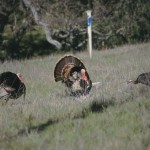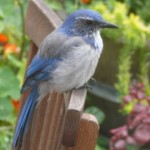 My study of kin selection in turkeys has been used in many college classrooms across the world, and is now making its way into a number of textbooks. Given that people actually seem to be reading this paper, I’ve always regretted the glaring typo that somehow made it into the final version of the manuscript. I remember it well- sending the proof out to a few friends and colleagues to share the good news that the paper would soon be published, and Mark Hauber writing back to let me know that the inequality sign in Hamilton’s Rule was reversed (it read rB – C < 0 when it should have read rB – C > 0). I quickly fired off an email to the editors of Nature to see whether there was time to fix it, and if not, to append a correction, but at the time they did not feel the typo warranted a special correction. The paper appeared with the mistake, and for the past 7 years I’ve fielded questions about the mistake, and proactively informed colleagues about it if they contact me about the study.
My study of kin selection in turkeys has been used in many college classrooms across the world, and is now making its way into a number of textbooks. Given that people actually seem to be reading this paper, I’ve always regretted the glaring typo that somehow made it into the final version of the manuscript. I remember it well- sending the proof out to a few friends and colleagues to share the good news that the paper would soon be published, and Mark Hauber writing back to let me know that the inequality sign in Hamilton’s Rule was reversed (it read rB – C < 0 when it should have read rB – C > 0). I quickly fired off an email to the editors of Nature to see whether there was time to fix it, and if not, to append a correction, but at the time they did not feel the typo warranted a special correction. The paper appeared with the mistake, and for the past 7 years I’ve fielded questions about the mistake, and proactively informed colleagues about it if they contact me about the study.
Imagine my surprise when a couple of weeks ago I get an email from an editor at Nature informing me that a reader had contacted them about a typographic error in the paper, and was I aware of this! Thankfully I still had the 2005 email exchange. While there is still no formal correction, the ability to provide reader comments on archived papers now allows me to make a note about the error. I’m not sure how many people actually read the comments, but hopefully it will help. I’ll definitely leave the warning up on my publications page as well.

